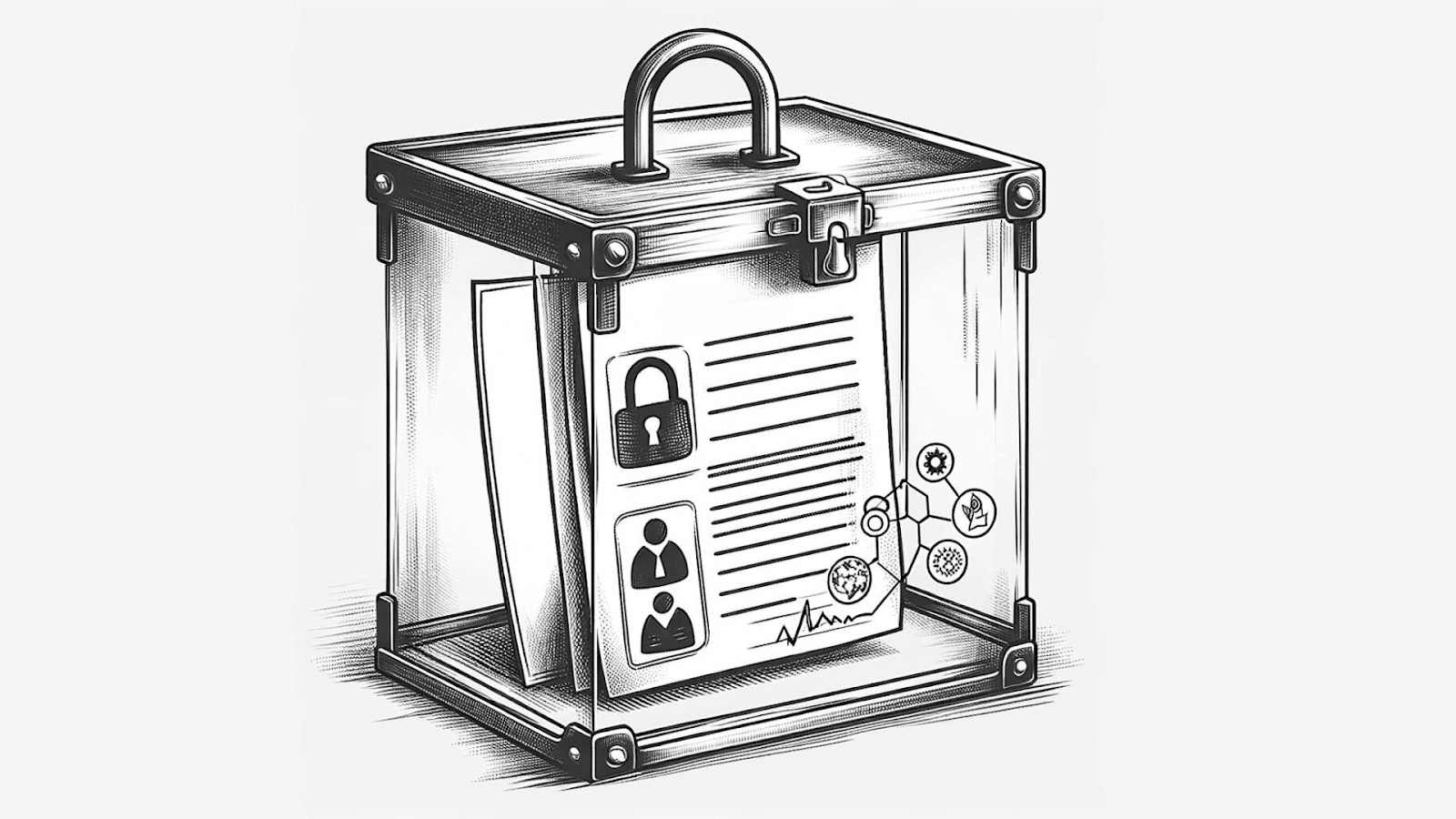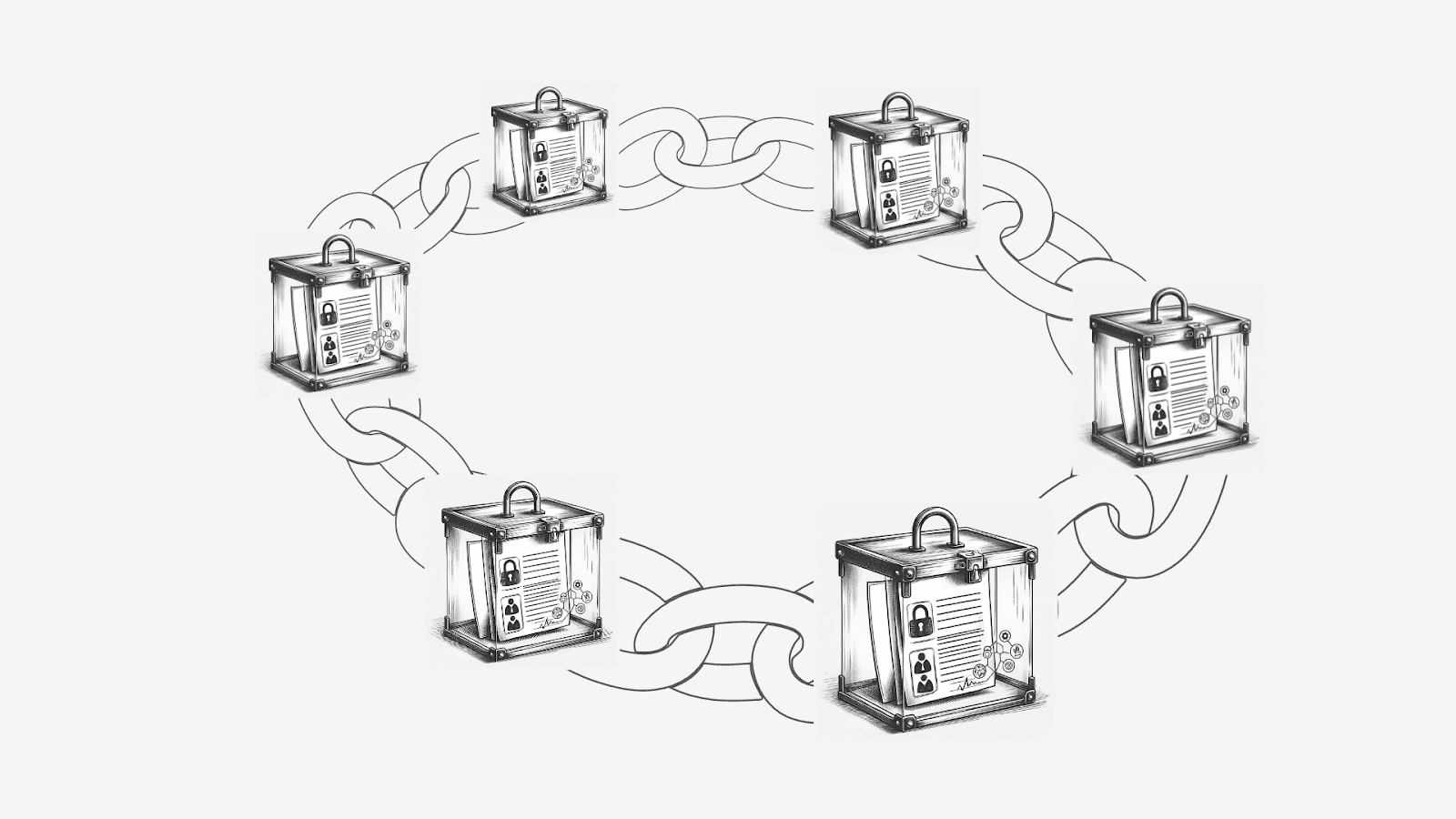Amid the restless advance of digital technologies, where data breaches are commonplace and data integrity is often questioned, the concepts of immutability and tamper-proofing stand as pillars of trust and security. Especially in compliance, where sticking to regulations and keeping accurate records is a non-negotiable.
But what do the terms “immutable” and “tamper-proof” mean? Why are they so vital in the context of compliance? And, how might blockchain bring to life the promise of “secure data everyone can trust”?
Let's dive in, accompanied by some simple, clear explanations.
The need for immutable and tamper-proof data
Compliance involves adhering to policies, laws and regulations set by businesses, governments and regulatory bodies. For most large companies, this will include internal data handling protocols, privacy laws, like the GDPR, and financial regulations, like the Sarbanes-Oxley Act.
For organisations, proving they're compliant means keeping accurate records of transactions, communications, and operations. This is where immutable and tamper-proof data becomes essential.
Immutable data ensures that once something is recorded, it stays recorded. There's no "delete" button and no editing, which is crucial for audit trails, financial transactions, and sensitive documents, where the accuracy and permanence of records are paramount.
Tamper-proof data, on the other hand, is about safeguarding data from unauthorised alteration. It's like putting data in a box using a padlock, which, if broken, clearly means it's been tampered with. This is vital for maintaining the integrity of data for compliance, ensuring that what's being presented to interested parties like regulators is true and unaltered.
The differences between immutable and tamper-proof, simplified
While both immutable and tamper-proof data are about protecting information, they focus on different aspects of data:
Immutability is about making data unchangeable over time, ensuring that once something is recorded, it remains as is forever. It's like writing on a piece of paper in permanent ink and then stamping your seal on top.

Tamper-proofing is about preventing unauthorised changes and ensuring that data is not just secure but verifiably secure.
Someone could get your bit of paper and add some writing to it, so tamper-proofing is akin to putting that original piece of paper you wrote on in a locked, transparent box where everyone can see it, but only authorised persons can access it.

Blockchain assures compliance with immutability and tamper-proofing
Blockchain technology was created with immutability and tamper-proofing engineered into its structure, making it an ideal solution for compliance-related data management.
But how does it work?
Blockchain creates a digital ledger of transactions that is distributed across a network. Each block in the chain contains a number of transactions. Once a block is added to the chain, it cannot be altered without altering every block that comes after it—a task that is practically impossible due to the cryptographic security and the distributed nature of the ledger.
Ensuring immutability
In a blockchain, once data is recorded, it's set in stone due to its connection with both the preceding and proceeding blocks, and so cannot be altered. This immutable nature is perfect for compliance, as it provides a verifiable and unchangeable record of transactions, operations, or any data relevant to regulatory requirements.
Guaranteeing tamper-proof data
Blockchain's structure makes it inherently resistant to tampering. Think again of our piece of paper, safely stored in its clear, locked and observed box. Now think of those boxes, duplicated across a wide network of locations, but with one key difference - these vaults are magically connected. All of them have to agree on any changes made to the contents of the paper, and all of them will record that change by adding another block to the chain. This is the fundamental nature of blockchain, and this is what makes it such a powerful tool for compliance.

Making an unauthorised change to any piece of information on the blockchain is virtually impossible, especially if a blockchain is run on a private network. This is because it would require both access to each vault in the network and an enormous amount of computational power to alter the majority of the copies of the ledger and do that simultaneously.
This tamper-proof characteristic - having distributed vaults that each contain and agree on the data they hold - ensures that compliance data remains intact and trustworthy and, therefore, legally defendable.

A new era of secure data?
For compliance leaders, data specialists and the partners who help them navigate the complex world of compliance data, the importance of immutable and tamper-proof data cannot be overstated. These qualities ensure that records are accurate, permanent, and secure from unauthorised alterations, thereby helping businesses meet regulatory requirements and maintain trust with clients, regulators, and the public.
Blockchain technology should stand at the forefront of this revolution. It offers a way to maintain compliance data with unmatched security and integrity. And never has security and integrity been more important than on the eve of the AI revolution.
As automated systems and AI tools spread like wildfire throughout businesses, blockchain-based systems will ensure compliance leaders don’t get their fingers burnt. By leveraging blockchain, their organisations can ensure that their data is both immutable and tamper-proof, making compliance simpler and more transparent, both of which will prove essential for AI.
In the end, it's not just about meeting legal requirements. It's about building a foundation of trust in a digital world.
Immutable, tamper-proof data—ensured by blockchain—is key to achieving that goal.